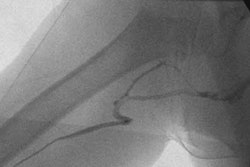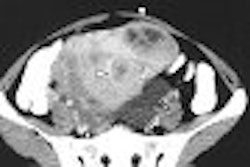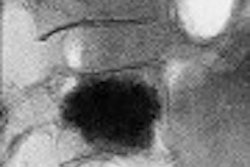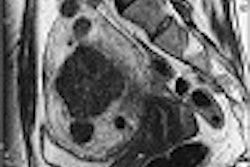NEW ORLEANS - With the use of both noninvasive coronary imaging and coronary stenting on the rise, increased demand for imaging of patients with stents -- or the stents themselves -- seems inevitable.
Reflecting that demand is a pair of studies presented Tuesday at the American Heart Association scientific sessions. One study reconfirmed the safety of magnetic resonance imaging just after stent implantation; the other suggested that computed tomography angiography may be useful in ruling out in-stent restenosis.
Based on animal investigations and a trio of clinical studies, imaging specialists have long felt that patients with metallic coronary stents can be safely examined with MRI only days after implantation.
But patients and referring clinicians often still have concerns -- and understandably so, since the materials produced by stent manufacturers generally advise waiting at least eight weeks after implantation before performing MRI.
"That worries people unnecessarily," said Emory University cardiologist Dr. Mushabbar Syed. "I get calls pretty much every day, (asking) 'We've got a patient with a stent, should we do an MRI?'"
Since MRI is an increasingly important means of evaluating patients after cardiac events and interventions, Syed and his co-authors looked at the safety of postimplantation imaging in the largest patient population to date (Circulation, October 26, 2004, Vol. 110:17, Supplement III-609, abstract 2832).
The researchers retrospectively examined hospital records and follow-up data on 133 consecutive patients who underwent stenting for acute myocardial infarction (AMI), 42% of whom also had an MR exam within seven days of implantation.
The average time between stenting and MRI was 2.3 days -- the shortest period of any reported study to date -- and the average follow-up was 18.5 weeks.
Imaging was performed on a 1.5-tesla scanner with high-performance gradients (180 mtesla/m/sec), and consisted of cine MRI using steady-state free precession techniques, perfusion, and viability assessment.
As was the case in earlier studies, the patients who had an MR scan fared better than those who didn't, experiencing fewer subsequent events. Syed attributed that phenomenon to referral bias, as unstable patients were excluded from undergoing MRI, and physicians may have generally kept sicker patients out of the scanner.
But the safety findings were clear, according to the authors.
"There was no evidence of adverse cardiovascular events in patients undergoing cardiac MRI," they concluded. "Thus, MRI is safe when performed very early after coronary intervention for acute myocardial infarction, even when using a high-performance cardiac scanner."
Meanwhile, researchers from Japan reported on their efforts to noninvasively and quantitatively evaluate in-stent restenosis using 16-slice CT.
Investigators from the Kyodo General Hospital in Tsuchiura, Japan, studied 86 consecutive patients using CT angiography, followed by conventional coronary angiography as the gold standard for comparison (Circulation, October 26, 2004, Vol. 110:17, Supplement III-563, abstract 2622).
Of the 167 stents in those patients, 143 were evaluable with CTA. Motion artifacts and severe calcifications prevented some evaluations, as did small stent size.
Despite these limitations, the CTA exams detected 22 of 23 significant (greater than 50%) stenoses, and correctly depicted the absence of restenosis in 104 of 120 stents, for a sensitivity of 95.9%, specificity of 86.7%, positive predictive value of 57.9%, and negative predictive value of 99.1%.
Multislice CTA "is potentially useful for quantification of in-stent lumen," the authors concluded. "However the agreement of MLD (minimal lumen diameter) values between MSCTA and QCA (quantitative coronary angiography) was only moderate by the present MSCTA protocol."
By Tracie L. Thompson
AuntMinnie.com staff writer
November 10, 2004
Related Reading
Coronary stent placement does not contraindicate immediate MRI, October 16, 2003
Artifact-free MRA renders metallic stents invisible, March 9, 2003
Repeat stenting does not improve long-term outcomes, May 16, 2002
Radiation therapy improves outcome in in-stent restenosis of vein grafts, April 18, 2002
Copyright © 2004 AuntMinnie.com



















